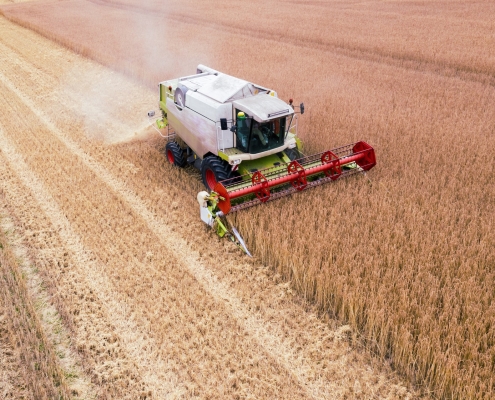Incentives could turn costs of biofuel mandates into environmental benefits
UNIVERSITY OF ILLINOIS AT URBANA-CHAMPAIGN INSTITUTE FOR SUSTAINABILITY, ENERGY, AND ENVIRONMENT
New studies from the Center for Advanced Bioenergy and Bioproducts Innovation (CABBI) shed more light on the economic and environmental costs of mandates in the Renewable Fuels Standard (RFS), a federal program to expand the nation’s biofuels sector.
Researchers said the studies indicate the need to adopt more targeted policies that value the environmental and ecosystem benefits of perennial bioenergy crops over cheaper options — and provide financial incentives for farmers to grow them.
The RFS was issued in 2005 and updated through the Energy Independence and Security Act of 2007 to enhance U.S. energy security, reduce greenhouse gas (GHG) emissions, and promote rural development. The 2007 standards mandated blending 36 billion gallons of first-generation biofuels (made from food crops like corn, such as ethanol) and second-generation biofuels (made from the biomass of miscanthus or other energy feedstocks) with fossil fuels by 2022, to replace petroleum-based heating oil and fuel. The corn ethanol mandate has been met, with 15 billion gallons produced annually, but production of cellulosic biofuels has been negligible. Targets beyond 2022 are yet to be determined.
The biofuel mandates impact the environment in multiple ways — affecting land use, GHG emissions, nitrogen (N) application, and leakage of harmful nitrogen compounds into the soil, air, and water. Those impacts vary by feedstock, as do the economic costs and benefits for consumers buying food and fuel and for producers, depending on cultivation costs and the competition for cropland for alternative uses.
Together, the studies showed that maintaining the corn ethanol mandate pushes more land into corn production, which increases the market price of other agricultural commodities. While producers might benefit from higher market prices, consumers who buy fuel or agricultural products pay the cost. And although the corn ethanol mandate can help mitigate GHG by displacing fossil fuels with biofuels, it increases nitrogen leaching because of increased fertilizer use with expanded corn production. That worsens water quality in the MARB and Gulf of Mexico and leads to a huge environmental and social cost.
In contrast, the cellulosic ethanol mandate could provide an overall benefit with the right policies. Supporting research and development to lower the cost of converting biomass to cellulosic ethanol would substantially reduce production costs and increase social benefits, and a high monetized value for GHG mitigation could offset all other costs.
These findings should lead policymakers to question the effectiveness of technology mandates like the RFS that treat all cellulosic feedstocks as identical. It incentivizes cheaper options like corn stover and limits incentives to grow high-yielding perennial energy crops that have lower carbon intensity and N-leakage but are more costly under current technology.
> Source: EurekAlert!




 Credit: Pexel/CC0 Public Domain
Credit: Pexel/CC0 Public Domain